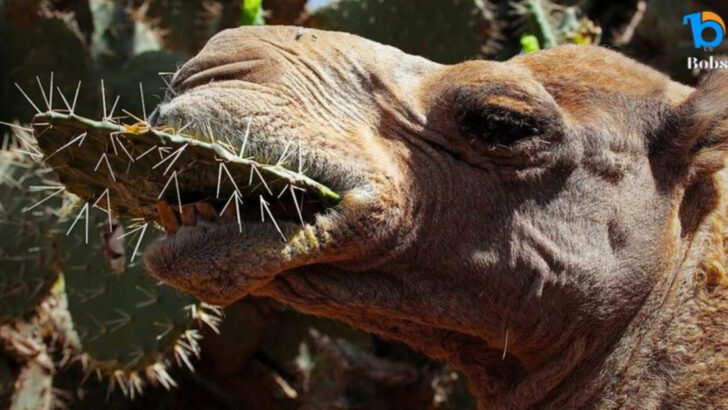Camels will eat things that would kill most animals on the spot. Barbed wire, bones, cactus spines, even plastic bags—nothing is off the menu when survival’s on the line. These desert nomads have turned desperate eating into an art form. When the land offers nothing but sand and thorns, camels get creative. Their mouths? Built like armor. Their guts? Iron-willed. It’s not pretty, but it works. Here are 11 of the strangest, sharpest, and most unexpected things camels munch on to stay alive in the planet’s most unforgiving places.
Thorny Bushes
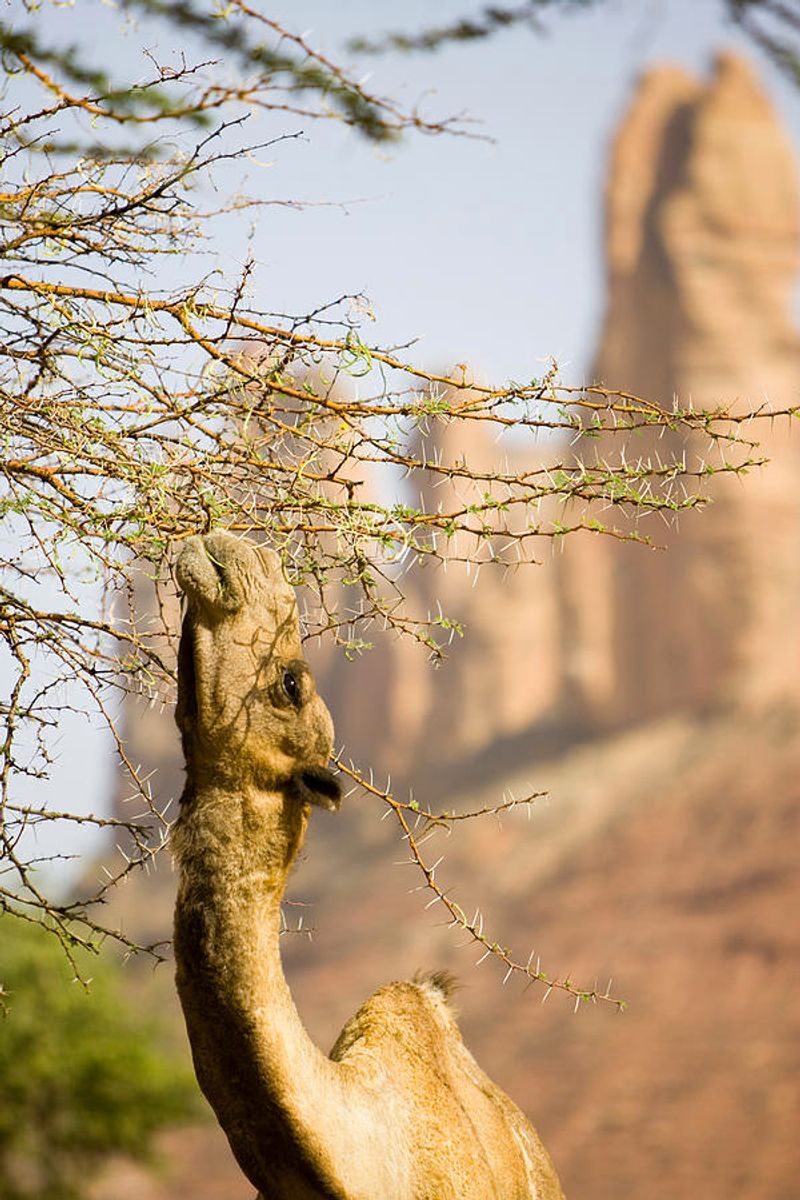
With their tough mouths and strong teeth, camels can devour thorny bushes without a second thought. These prickly plants, which would deter most animals, provide essential nutrients to camels. Their ability to consume such roughage demonstrates an incredible adaptation to their environment.
The spikes and thorns that cover these bushes do little to deter the camel’s appetite. They seem to relish the challenge of gnawing through tough, fibrous branches.
This adaptation is a key survival trait, enabling them to thrive where other animals might starve. Camels can extract moisture from these plants, aiding their hydration.
Cactus Pads
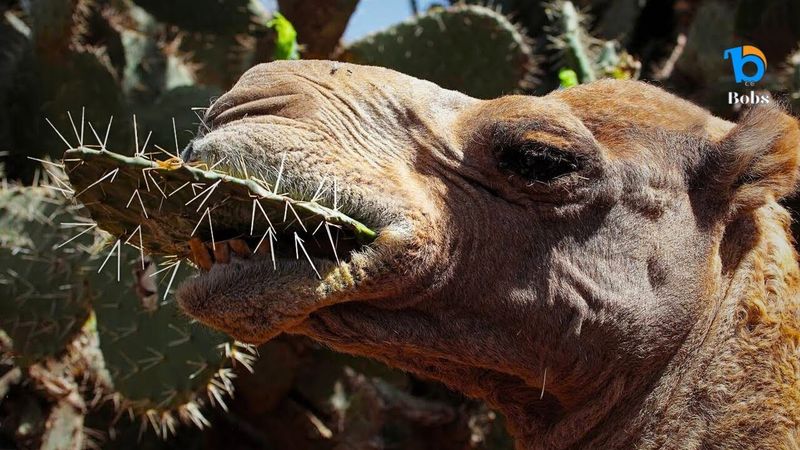
Camels don’t shy away from a cactus’s spiny pads. Equipped with thick lips, they deftly avoid the sharp spines, munching away at the succulent parts. This skill allows them to access water and nutrients stored within these hardy plants.
The sight of a camel eating a cactus may seem peculiar, but it’s essential for their survival. Their specialized digestive systems can process the tough, cellulose-rich material efficiently.
Such dietary habits illustrate the camel’s extraordinary ability to adapt to scarce food sources, turning potential hazards into valuable resources in the arid desert environment.
Date Palm Leaves
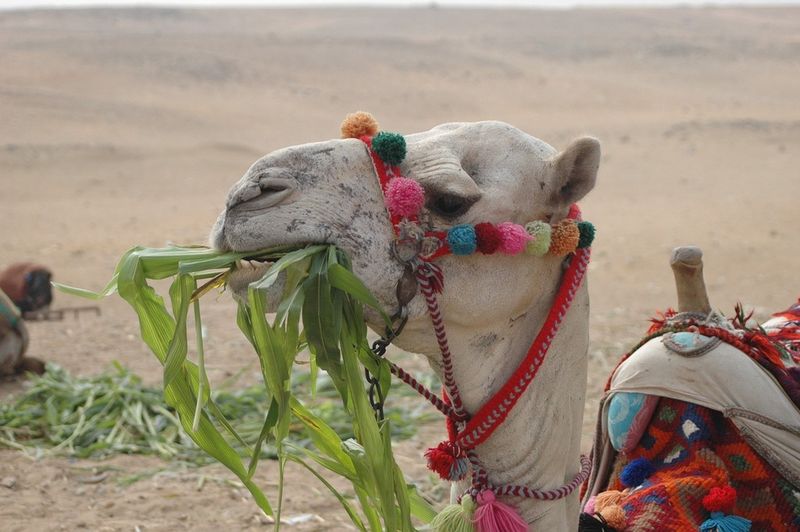
Date palm leaves are a favorite among camels, despite their fibrous texture. These leaves provide necessary nutrients and can be found in many desert oases where camels roam. The leaves are tough, yet camels chew them with ease thanks to their specialized teeth.
Camels often stand on their hind legs to reach the leaves, showcasing their impressive flexibility. This dietary choice helps sustain them in areas where other vegetation might be sparse.
Such adaptability highlights how camels maximize their food intake, ensuring they can survive and even thrive in harsh desert climates.
Dry Grasses
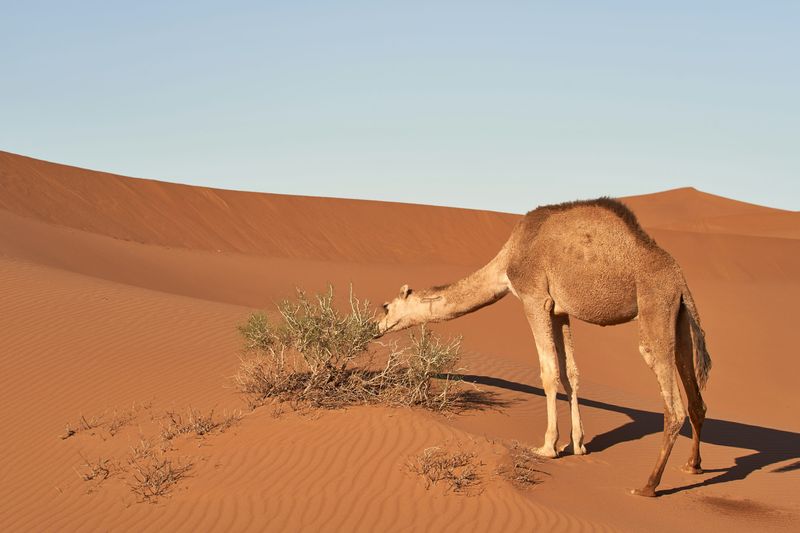
Dry grasses, which offer minimal nutritional value to many animals, are a staple in the camel’s diet. Camels have evolved to extract every possible nutrient from these parched plants, showcasing their remarkable digestive efficiency.
In the arid desert, where food is scarce, camels make the most of what little is available. Their rumen allows them to ferment and digest tough grass fibers that would be indigestible to other species.
This ability to utilize such a low-quality food source demonstrates the camel’s remarkable adaptability and resilience in surviving one of the planet’s most unforgiving environments.
Saltbush
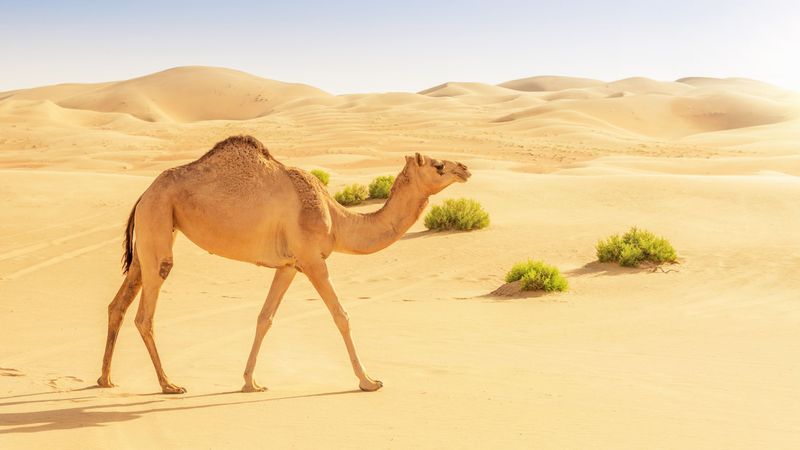
Saltbush plants, which thrive in salty and arid environments, are another unusual addition to the camel’s diet. These plants are rich in minerals that are essential for the camel’s health. They have adapted to consume these salty plants without any adverse effects.
Camels benefit from the saltbush’s unique nutrient profile, which includes high salt content and various trace minerals. Their ability to consume such plants without dehydration is extraordinary.
This dietary choice underscores the camel’s adaptability, enabling them to survive in areas where few plants can grow and food sources are limited.
Acacia Pods
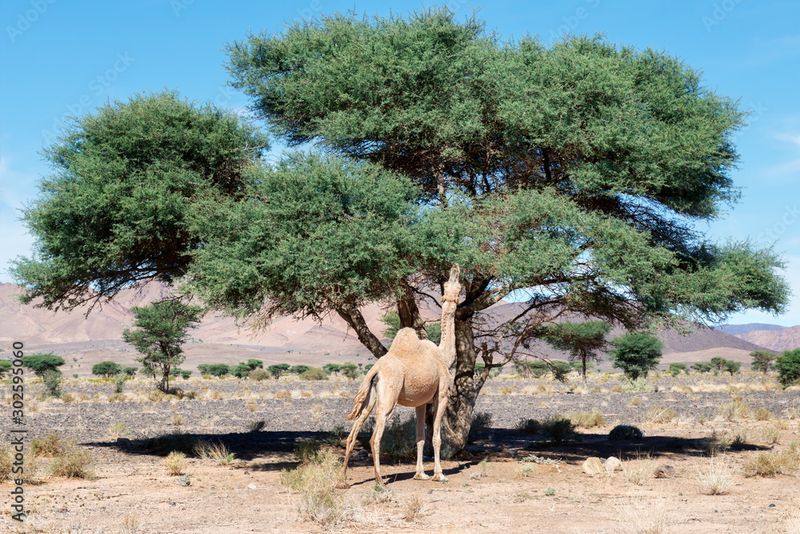
Acacia pods are a nutritious part of the camel’s diet, offering protein and energy that sustain them in the desert. These pods are available throughout the year, making them an important food source.
Camels have developed a preference for these pods, and their digestive systems are adept at processing them. The availability of acacia pods helps ensure a consistent food supply, even in difficult conditions.
This dietary choice reflects the camel’s ability to find and utilize resources that provide essential nutrients, reinforcing their status as one of the desert’s most resilient inhabitants.
Tamarisk Leaves
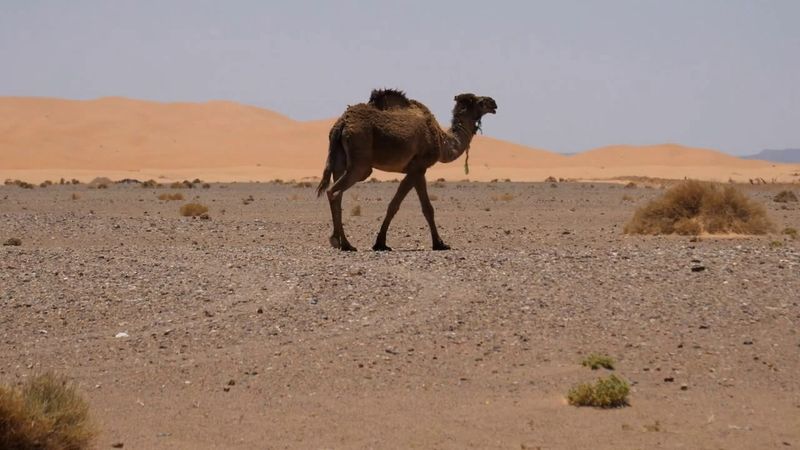
Tamarisk leaves, with their salty taste, are an acquired preference for camels. These leaves grow on hardy shrubs that are found in desert regions. Camels’ ability to consume these leaves without any negative effects highlights their incredible adaptability.
The tamarisk plant’s salty profile might deter other animals, but camels embrace it as a valuable food source. They benefit from the leaves’ moisture content, aiding hydration.
This unusual dietary choice exemplifies the camel’s impressive survival strategies, allowing them to thrive in environments where other animals might struggle to find sustenance.
Bones
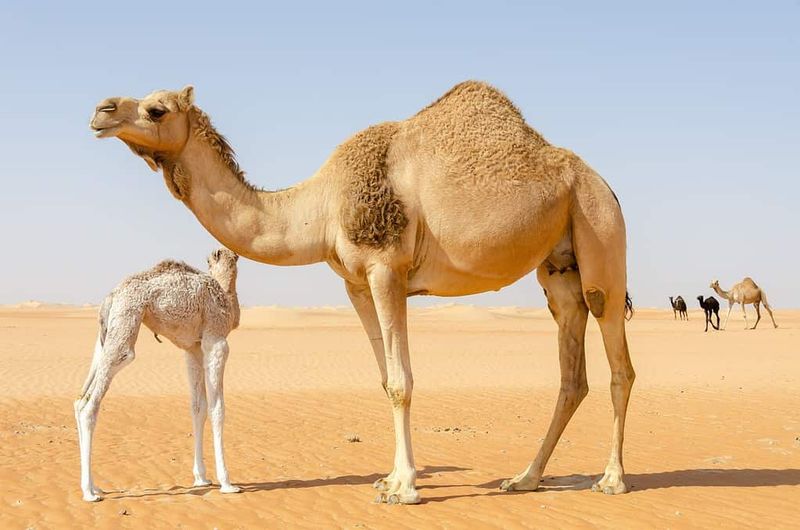
Camels sometimes chew on bones to supplement their mineral intake, especially calcium and phosphorus. This behavior is more common in nutrient-poor environments, where traditional food sources might be lacking.
The practice of gnawing on bones is unusual, yet it serves a critical function for camels residing in the desert. By breaking down these bones, they obtain essential minerals that support their health.
This quirky habit showcases the camel’s resourcefulness, turning what seems inedible into a valuable nutritional resource, emphasizing their adaptability and resilience in harsh desert conditions.
Desert Truffles
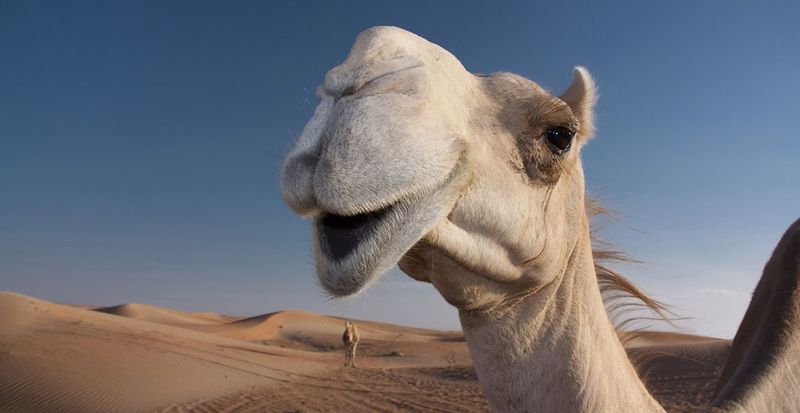
Desert truffles are a rare and prized find in the desert, providing camels with a nutrient-rich food source. These underground fungi are not only delicious but also packed with essential nutrients.
Camels use their keen sense of smell to locate these hidden treasures. Once unearthed, truffles offer a burst of energy and nutrition, making them a sought-after delicacy.
This exceptional dietary choice highlights the camel’s ability to exploit a wide array of food sources, demonstrating their versatility and survival instincts in environments where food is often scarce.
Bitter Melons
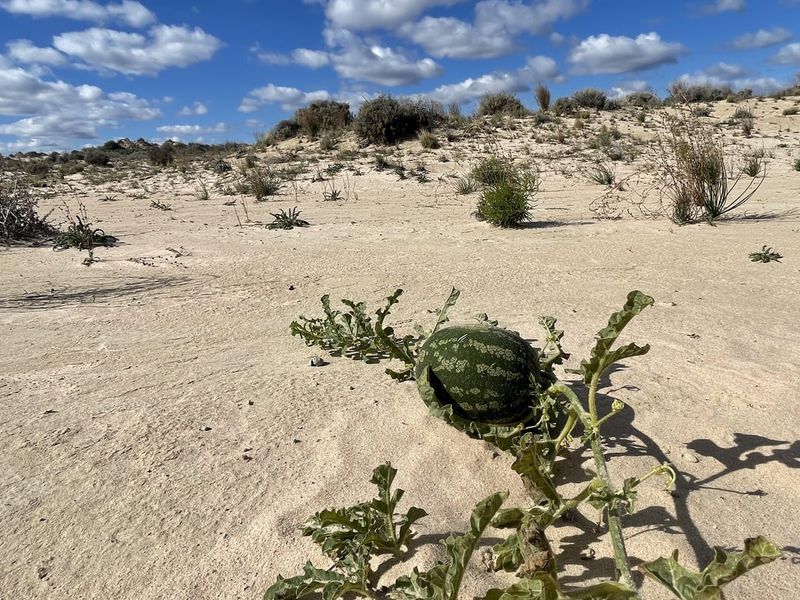
Bitter melons might seem unpalatable to many creatures, but camels have no such qualms. These melons, with their distinctive bitter flavor, provide hydration and nutrients.
The camel’s willingness to consume such bitter fare illustrates its non-discriminatory palate. These melons thrive in rocky, arid areas, adding diversity to the camel’s diet.
By incorporating bitter melons into their meals, camels showcase their ability to turn even the most unlikely foods into sustenance, highlighting the adaptability and ingenuity that characterize their survival strategies in challenging habitats.
Haloxylon
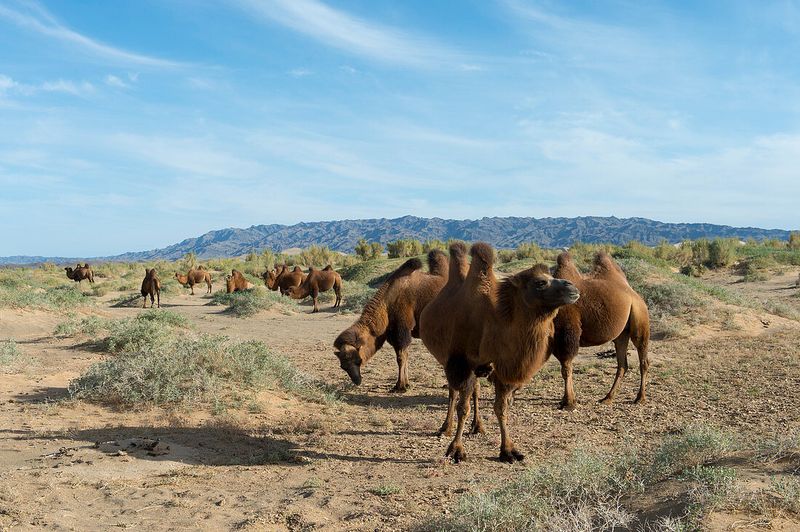
Haloxylon, a tough desert shrub, is another surprising element in the camel’s diet. With its needle-like leaves, it provides crucial nutrition and moisture. Camels have adapted to consume these hardy plants without discomfort.
The camel’s consumption of Haloxylon underscores their ability to digest and extract nutrients from unlikely sources. This adaptability allows them to thrive even in regions with sparse vegetation.
By incorporating such tough plants into their diet, camels demonstrate their resourcefulness and capability to survive in some of the harshest climates on Earth.

